
- •25 Being for the processor to write directly to both the cache and main memory at the same time.
- •2 Mark the following as True or False:
- •0 Re-read the text to find the answers to these questions.
- •1 Match the terms in Table a with the statements in Table b.
- •Consulting room Doctor b Consulting room Doctor a
- •Consulting room Doctor c
- •Medical Centre Local Area Network
- •Instructions/complex instructions
- •View menu
- •Imagined action and effect
- •Identify which layer attaches the following headers to a network transmission:
- •Intermediate
- •If there is any reason to fear the warning may not be understood, a reason for the warning may be added. For example:
- •Vou must not use your own programs on these machines,
- •24Seven
- •Ip layers
- •0 Re-read the text to find the answers to these questions.
- •If the subjects are the same in both actions, we can use a participle:
- •0 Re-read the text to find the answers to these questions.
- •Xml tags contain information about what the data is.
- •Voice over ip The future
- •Message- authentication code
- •In this section, we will revise structures commonly used in programming. You have met these structures in earlier units but in different contexts.
- •Word study
- •Incremental backup
- •Information Technology
V>H
Oxford English for
«
Information Technology
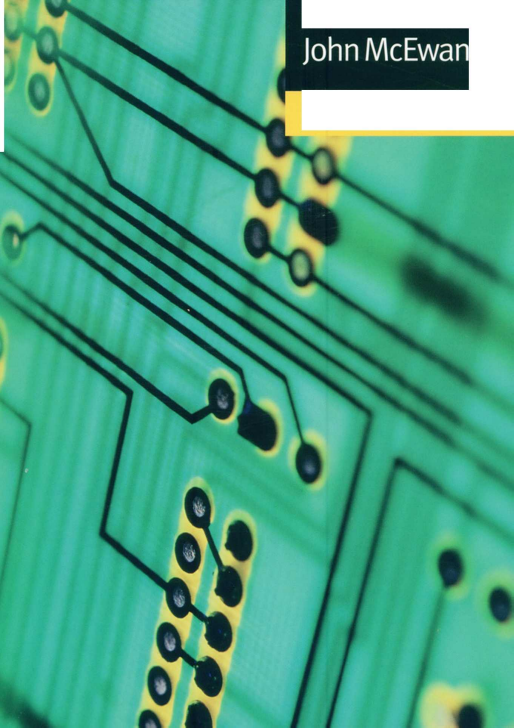


Second Edition
(
%
t
*
*
EricH.Glendinning
OXFORD
■-


m
0
Contents
Language Work
Unit / Title
|
10 |
2 Computer Architecture |
Describing how an item functions Prepositions of place |
Locating specific information |
|
Exchanging technical information |
Sequencing instructions |
|
18 |
3 Computer Applications |
Present passive |
Reading diagrams Ignoring irrelevant info |
|
Describing a process |
Describing a process |
|
24 |
4 Peripherals |
Revision: Comparison and contrast |
|
Listening for detail |
|
Describing function Comparing and contrasting |
|
32 |
5 Interview: Former Student |
Revision: Past simple questions Word Study: up- and -up verbs |
|
Listening for detail |
|
Describing function |
|
36 |
6 Operating Systems |
-ing form: as noun and after prepositions |
Matching text and diagram Prediction |
|
Exchanging technical information |
|
|
44 |
7 Graphical User Interfaces |
let, permit |
Reading diagrams |
|
Providing explanations |
|
|
52 |
8 Applications Programs |
Instructions and complex instructions |
Note-taking |
|
Exchanging information |
Making recommenda tions |
|
60 |
9 Multimedia |
-ing clauses: cause and effect |
Locating information in diagram and text |
|
Providing explanations |
Describing a process |
|
68 |
!io Interview: Computing Support Officer |
//-sentences, types 1 and 2 Word Study: noun + noun compounds |
|
Matching diagrams and spoken output |
Giving instructions |
|
|
72 |
11 Networks |
Relative clauses with a participle |
Matching text and diagram |
|
Providing explanations |
Describing advantages and disadvantages |
|
80 |
12 The Internet |
Warnings |
Computer mediated communication |
|
|
Writing a newsgroup contribution |
|
88 |
13 The World Wide Web |
Time clauses |
|
Information transfer, listening and note-taking |
|
Describing a process |
|
96 |
14 Websites |
Giving advice |
Understanding the writer’s purpose |
\ |
Exchanging information |
Evaluating |
Computer
Users
Revision:
Past simple and Present perfect
Noting
specific Exchanging information information
Writing
a brief description

|
|
|
|
|
|
| ||||||
|
Page |
I Unit / Title |
Language Work |
Reading |
Listening |
Speaking |
Writing | |||||
|
102 |
15 Interview: Webpage Creator |
would Word Study: definitions and collocations |
|
Listening for specific information |
Exchanging information |
Advising | |||||
|
108 |
16 Communications Systems |
Predictions: certainty expressions |
Reading for specific information |
Listening for predictions and certainty |
Exchanging information to complete a diagram |
Describing a system | |||||
|
116 |
17 Computing Support |
Diagnosing a fault and giving advice |
|
Information transfer from telephone call to form |
Giving advice on technical problems |
Reporting a problem | |||||
|
124 |
18 Data Security 1 |
Cause and effect cause to/make; causative verbs; en- and -e/? verbs |
Scanning |
|
Exchanging information |
Explaining a computer crime | |||||
Reading a table
Cause and effect using allow and prevent links
Exchanging
explanations
|
140 |
20 Interview: The ex*hacker |
Phrasal verbs Word Study: semantic groups |
|
Listening for specific information |
Role play |
Writing a short news item |
|
146 |
21 Software Engineering |
Revision: IfX, then Y. Do until, do while |
|
Listening for specific information |
Exchanging information and options |
Describing advantages and disadvantages |
|
154 |
22 People in Computing |
Requirements: need to, have to, must, be + essential/critical |
Reading and note-taking |
|
Asking targeted questions |
Writing a c.v. |
|
162 j |
23 Recent Developments in IT |
Ability: can, could, be able to |
Reading and note-taking |
Comparing different versions of a text |
Making a presentation |
Writing a report |
|
172 |
24 The Future of IT |
Predictions: Future perfect and It in subject position |
Reading and note-taking |
Listening for points of view |
Persuading others to your point of view |
Writing a summary |
|
178 |
25 Interview: Electronic Publishing |
Emphasising: cleft sentences Word Study: prefixes; -ise verbs |
|
Listening for points of view |
Planning group presentation Defending a decision |
|
Describing how a system operates
184 ! Pairwork Student A 190 ; Pairwork Student B 196 Listening Script
203 Glossary of computing terms and abbreviations
|
| |
|
1 |
• ■ |
|
1 1 |
|
|
F d |
r ' |
|
» , |
|
|
|
|
Computer Users
UNIT 1
Work
in groups. Share information on how you use computers in your free
time. Compare answers with other groups and make a list of uses for
your class.
STARTER
O You are going to hear four people talk about how they use
LISTENING
computers. Before you listen, try to predict the uses they describe.
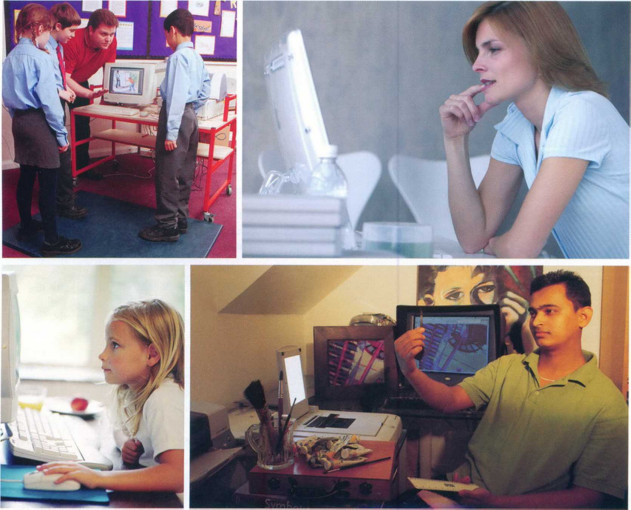
|
User |
Possible use |
|
primary school teacher |
|
|
Open University student |
|
|
girl (Louise), aged 6 |
|
|
artist |
|
5
Q Now listen to the recordings and note the actual uses described.
|
User |
Actual use |
|
primary school teacher Open University student girl (Louise), aged 6 artist |
|
Q Now listen to the recordings again to find the answers to these questions:
How does the story-telling program encourage children to work together?
In what way is the children’s reaction to this program different from other uses they make of computers?
What is the OU student studying?
What opportunity has she to meet other students?
What can you do with Pets 3?
What does Louise do with clipart?
How did the artist display work to dealers in the past?
What is the difficulty in selling through a website?
LANGUAGE WORK
Revision: Past simple and Present perfect
Study these examples of the Present perfect from the recording of the artist.
I've scanned in about a third of these photographs.
I've organised the paintings into themes.
I've added a sound track.
Why doesn't the speaker use the Past simple?
I scanned in about a third of these photographs.
I organised the paintings into themes.
I added a sound track.
We use the Present perfect to describe past actions with present relevance. The artist uses the Present perfect because he is describing a CD he has just made and what he is going to do with it in the near future.
We use the Past simple to describe completed actions in the past. It is often used with time expressions such as last year, before PCs were introduced, in 1998. Note these examples from the recording:
I made one for Mary's birthday last week.
We tried it out last term.
The artist is being interviewed. Make questions to match his answers. Use the correct form of the Past simple or Present perfect, whichever is correct. For example:
Question: What did you do yesterday?
Answer: Worked on the computer.
|
1 |
Q |
What... |
|
|
A |
Worked on a CD of my paintings. |
|
2 |
Q |
How many... |
|
|
A |
About a third. |
|
3 |
Q |
What... |
|
|
A |
1 destroyed them. |
|
4 |
Q |
How... |
|
|
A |
1 scanned them in. |
|
5 |
Q |
How... |
|
|
A |
I’ve organised them into themes. |
|
6 |
Q |
Have ... |
|
|
A |
Yes, I’ve added a sound track. |
|
7 |
Q |
How long... |
|
|
A |
It’s taken me about a week. |
|
8 |
Q |
When ... |
|
|
A |
1 started about ten years ago. |
|
9 |
Q |
What... |
|
|
A |
Before 1 had a computer, 1 had to use slides. |
|
10 |
Q |
Have ... |
|
|
A |
Yes, I’ve sold a few. |
Put the tenses in this dialogue in the correct form: Past simple or Present perfect.
A What (do) today?
B I (work) on my project. I (search) the Web for sites on
digital cameras.
A (find) any good ones?
B I (find) several company sites - Sony, Canon,... but I (want)
one which (compare) all the models.
A Which search engine (use)?
B Dogpile mostly, (ever use) it?
A Yes, I (try) it but I (have) more luck with Ask Jeeves. Why
don’t you try it?
B I (have) enough for one night. I (spend) hours on that
project.
A I (not start) on mine yet.
B Yeh? I bet you (do) it all.
QH How do you think these professions might use computers? Compare answers with others in your group.
PROBLEM-SOLVING
architects interior designers farmers
landscape
gardeners musicians rally drivers sales people
Work in pairs. Find out this information from your partner. Make sure you use the correct tense in your questions. For example:
SPEAKING
download music from the Internet [what site]
A Have you ever downloaded music from the Internet?
What site did you use?
B
send a video email attachment
fit an expansion card
replace a hard disk
fix a printer fault
make your own website
have a virus
watched TV on the Internet
write a program
[who to, when] [which type] [what model] [what kind]
[how]
[which virus] [which station] [which language]
Describe
how you use computers in your study and in your
WRITING
free time.
SPECIALIST READING

Find the answers to these questions in the following text
Name some types of devices that use ‘computers on a chip’.
What uses of handheld computers are mentioned in the text?
What are the benefits of using computers with the following items?
a Security systems b Cars c Phones
What smart devices are mentioned in the text?
What are smart cards used for?
What are the advantages of multimedia?
What can medical expert systems do?
How can computers help the disabled?
What types of computing systems are made available to people in remote locations using electronic classrooms or boardrooms?
What aspects of computing can people power determine?
Computers Make the World Smaller and Smarter
The ability of tiny computing devices to control complex operations has transformed the way many tasks are performed, ranging from scientific research to producing
consumer products. Tiny 'computers on a chip’ are used in medical equipment, home appliances, cars and toys. Workers use handheld computing devices to collect data at a customer site, to generate forms, to control
io inventory, and to serve as desktop organisers.
Not only is computing equipment getting smaller, it is getting more sophisticated. Computers are part of many machines and devices that once required continual human is supervision and control. Today, computers in security systems result in safer environments, computers in cars improve energy efficiency, and computers in phones provide features such as call forwarding, call monitoring, and 20 call answering.
These smart machines are designed to take over some of the basic tasks previously performed by people; by so doing, they make life a little easier and a little more pleasant.
25 Smart cards store vital information such as health records, drivers’ licenses, bank balances, and so on. Smart phones, cars, and appliances with built in computers can be programmed to better meet individual needs. 30 A smart house has a built-in monitoring system that can turn lights on and off, open and close windows, operate the oven, and more.
With small computing devices available for 35 performing smart tasks like cooking dinner, programming the DVD recorder, and controlling the flow of information in an organization, people are able to spend more time doing what they often do best - being creative. Computers 40 can help people work more creatively.
Multimedia systems are known for their educational and entertainment value, which we call 'edutainment’. Multimedia combines
text
with sound, video, animation, and «
graphics,
which greatly enhances the interaction between user and machine and
can make information more interesting and appealing to people.
Expert systems software enables computers to 'think’ like experts,
so
Medical
diagnosis expert systems, for example, can help doctors pinpoint a
patient’s illness, suggest further tests, and prescribe
appropriate drugs.
Connectivity enables computers and software 55 that might otherwise be incompatible to communicate and to share resources. Now that computers are proliferating in many areas and networks are available for people to access data and communicate with others, 60 personal computers are becoming
interpersonal PCs. They have the potential to significantly improve the way we relate to each other. Many people today telecommute - that is, use their computers to stay in touch 65 with the office while they are working at home. With the proper tools, hospital staff can get a diagnosis from a medical expert hundreds or thousands of miles away.
Similarly, the disabled can communicate more 70 effectively with others using computers.
Distance learning and videoconferencing are concepts made possible with the use of an electronic classroom or boardroom accessible to people in remote locations. Vast databases 75 of information are currently available to users of the Internet, all of whom can send mail messages to each other. The information superhighway is designed to significantly expand this interactive connectivity so that so people all over the world will have free access to all these resources.
People power is critical to ensuring that hardware, software, and connectivity are effectively integrated in a socially responsible ss way. People - computer users and computer professionals - are the ones who will decide which hardware, software, and networks endure and how great an impact they will have on our lives. Ultimately people power 90 must be exercised to ensure that computers are used not only efficiently but in a socially responsible way.
PI Re-read the text to find the answers to la! these questions:
Match the terms in Table A with the statements in Table B.
Table A
a Edutainment b Multimedia c Expert system d Telecommute e Information superhighway
Table B
Software that enables computers to ‘think’ like experts
Use computers to stay in touch with the office while working at home
Internet system designed to provide free, interactive access to vast resources for people all over the world
Multimedia materials with a combination of educational and entertainment content
A combination of text with sound, video, animation, and graphics
Mark the following statements as True or False:
a Desktop organisers are programs that require desktop computers, b Computers are sometimes used to monitor systems that previously needed human supervision, c Networking is a way of allowing otherwise incompatible systems to communicate and share resources, d The use of computers prevents people from being creative, e Computer users do not have much influence over the way that computing develops.
(Adapted from ‘Computing in the Information Age’, 2nd edition, Nancy Stern & Robert A. Stern, (Wiley), pages 19-22]

I
I
Name
these different types of devices. Then match the possible users
below to each type. Justify your choice.
STARTER
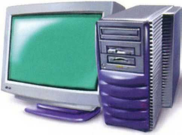
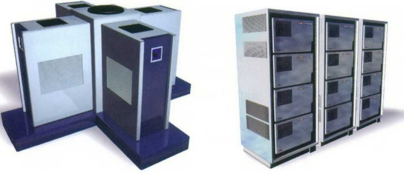
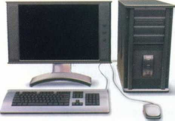

i-а 3*1
4-: 5-d' 6m4
Уті' 0wt 9»e

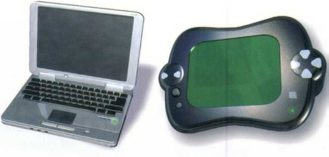
student using a computer for entertainment while travelling
Fig 1
large company processing payroll data
travelling salesperson giving marketing presentations
large scientific organisation processing work on nuclear research
businessperson keeping in touch with clients while travelling
graphic designer
secretary doing general office work
What do these abbreviations mean? Use the Glossary if necessary.
|
1 |
CD-ROM |
5 |
FSB |
|
2 |
TFT |
6 |
SDRAM |
|
3 |
MB |
7 |
XGA |
|
4 |
GHz |
|
|
READING 3
Now study the text below to find this information:
What is the memory size of this PC?
What storage devices are supplied?
What size is the display screen?
How fast is the processor?
What is the capacity of the hard drive?
Which operating system does it use?
What multimedia features does the computer have?
HOW TO READ A COMPUTER AD.
Fig 2
Computer ad
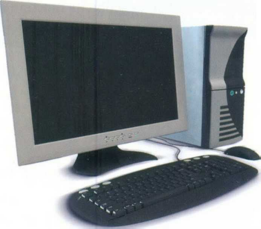
Intel Pentium 4 processor (3GHz, 800MHz FSB)
Mini-tower chassis
1GB dual channel DDR2 SDRAM
200GB Serial ATA hard drive (7200 r.p.m.)
128MB PCI-Express video card
Integrated audio
48X CD-RW drive
19" TFT flat panel XGA (1024 X 768) monitor
Microsoft Windows XP Professional
The main processing chip called a 'Pentium 4' that was designed and manufactured by the Intel Corporation. It operates at a clock speed of three gigahertz and has a front-side bus that operates at a speed of eight hundred megahertz.
A small, tall and narrow style of case containing the computer system.
Synchronous dynamic random access memory with a capacity of one gigabyte. It is a high bandwidth, double data rate memory.
A hard drive with a capacity of two hundred gigabytes that uses a type of connection interface known as Serial ATA i.e. it has a serial data connection rather than the original parallel connection.
It rotates at a speed of seven thousand, two hundred revolutions per minute.
Electronics for driving the graphics output that has a memory capacity of one hundred and twenty-eight megabytes and uses a type of connection interface known as PCI-Express.
Electronics for controlling the sound output that is built into the main electronics of the computer.
A compact disk read/write disk drive that operates at forty-eight times the speed of the original CD drives.
A nineteen inch, flat display screen made from thin film transistors with a resolution of 1024 by 768.
The operating system that is used to control the system.
Function of an item
LANGUAGE WORK
We can describe the function of an item in a number of ways. Study these examples.
Using the Present simple
ROM holds instructions which are needed to
start up the computer.
Used fo-infinitive, Used for + -ing form
ROM is used to hold instructions which are
needed to start up the computer.
ROM is used for holding instructions which
are needed to start up the computer.
Emphasising the function
The function of ROM is to hold instructions
which are needed to start up the computer.
QH Match each item in Column A with its function in Column B. Then describe its function in two ways.
|
A Item |
B Function |
|
RAM processor mouse clock flash memory key monitor keyboard DVD-ROM drive cache ROM |
controls the cursor inputs data through keys like a typewriter displays the output from a computer on a screen reads DVD-ROMs reads and writes to electronic chips on a card holds instructions which are needed to start up the computer holds data read or written to it by the processor provides extremely fast access for sections of a program and its data controls the timing of signals in the computer controls all the operations in a computer |
With the help of the Glossary if necessary, describe the functions of these items.
5
|
1 |
scanner |
6 |
supercomputer |
|
2 |
printer |
7 |
mainframe computer |
|
3 |
ATM |
8 |
barcodes |
|
4 |
PDA |
9 |
swipe cards |
|
5 |
hard disk drive |
10 |
memory |
Prepositions of place
■
LANGUAGE WORK
Study these examples of prepositions of place.
Bus
interface
unit
ALU
Disks Video, etc.
Timing & Control
ROM RAM I/O
U I tit
^ Data Bus ^
i
Address Bus
Data moves between the CPU and
RAM.
Data flows from ROM to the CPU.
A program is read from disk into
memory.
Data is transferred along the data
bus.
The address number is put onto
the address bus.
Fig 3
Fig 4
Hard disk
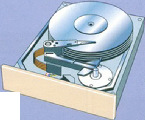
Computer buses
The hard disk drive is inside a sealed case.
Heads move across the disk.
Tracks are divided into sectors.
Complete each sentence using the correct preposition.
The CPU is a large chip the computer.
Data always flows the CPU the address bus.
The CPU can be divided three parts.
A Data flows the CPU and memory.
Peripherals are devices the computer but linked
it.
The signal moves the VDU screen one side
the other.
The CPU puts the address the address bus.
The CPU can fetch data memory the data bus.
Study these ‘System upgrades and options’ for the computer described in Task 3. Which upgrades and/or options would improve these aspects of this computer?
capacity
PROBLEM-SOLVING
speed
protection from damage due to power failure
network connections
Upgrades and options
10/100/1000 Ethernet controller 16X DVD+/-RW drive Extra memory module APC 1400 Smart-UPS
Year Next-Business-Day On-site maintenance
SPEAKING
Work in pairs, A and B. Find out as much as you can about your partner’s computer and complete this table.
Student A Your computer details are on page 184.
Student B Your computer details are on page 190.
|
Feature |
A |
B |
|
processor type |
|
|
|
processor speed |
|
|
|
bus speed |
|
|
|
memory capacity |
|
|
|
memory speed |
|
|
|
memory type |
|
|
|
hard disk capacity |
|
|
|
screen size |
|
|
|
screen resolution |
|
|
|
optical drive speed |
|
|
Put these instructions for opening a computer in the correct sequence.
a Release the two catches underneath and lift up to remove panel,
WRITING
b Shut down your computer by choosing Shut Down from the
Apple menu or the Special menu, c If there are security screws on the vertical plate on the back of the computer, remove them with a Philips screwdriver, d Unplug all the cables except the power cord from your computer,
e Pulling gently, slide the tray out.
Match
these figures to the instructions.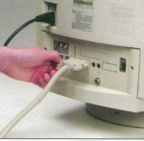
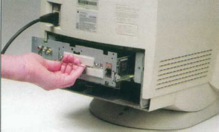
Fig
5
Opening
a computer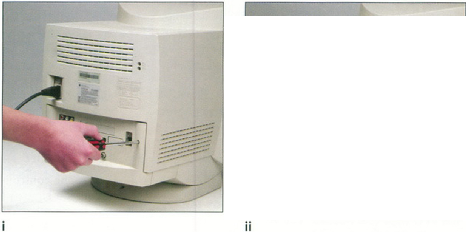
V
V V
III
Add these sequence words to your instructions: first, then, next, after that, finally.
|
SPECIALIST READING |
|
|
D Find the answers to these questions in the following texts. | |
|
1 What is one of the main causes of a PC not |
5 When does a write-back cache write its |
|
running at its highest potential speed? |
contents back to main memory? |
|
2 What word in the text is used instead of |
6 When is data marked as ‘dirty’ in a write |
|
‘buffer’? |
back cache? |
|
3 What device looks after cache coherency? |
7 What determines what data is replaced in a |
|
4 What is the main alternative to ‘write- |
disk cache? |
|
through cache*? |
|
CACHE MEMORY
Most PCs are held back not by the speed of their main processor, but by the time it takes to move data in and out of memory. One of the most important techniques for getting around this s bottleneck is the memory cache.
The idea is to use a small number of very fast memory chips as a buffer or cache between main memory and the processor. Whenever the processor needs to read data it looks in this cache
io area first. If it finds the data in the cache then this counts as a ‘cache hit’ and the processor need not go through the more laborious process of reading data from the main memory. Only if the data is not in the cache does it need to access main is memory, but in the process it copies whatever it finds into the cache so that it is there ready for the next time it is needed. The whole process is controlled by a group of logic circuits called the cache controller.
20 One of the cache controller’s main jobs is to look after ‘cache coherency’ which means ensuring that any changes written to main memory are reflected within the cache and vice versa. There are several techniques for achieving this, the most obvious
25 Being for the processor to write directly to both the cache and main memory at the same time.
This is known as a ‘write-through’ cache and is the safest solution, but also the slowest.
The main alternative is the ‘write-back’ cache 30 which allows the processor to write changes only to the cache and not to main memory. Cache entries that have changed are flagged as ‘dirty’, telling the cache controller to write their contents back to main memory before using the space to 35 cache new data. A write-back cache speeds up the write process, but does require a more intelligent cache controller.
Most cache controllers move a ‘line’ of data rather than just a single item each time they need to 40 transfer data between main memory and the cache. This tends to improve the chance of a cache hit as most programs spend their time stepping through instructions stored sequentially in memory, rather than jumping about from one 45 area to another. The amount of data transferred each time is known as the ‘line size’.



|
|
Processor |
|
| |
|
« |
|
Processor

Cache
Controller

Cache
Main
Memory
If there is a cache hit then the processor only needs to access the cache. If there is a miss then it needs to both fetch data from main memory and update the cache, which takes longer. With a standard write-through cache, data has to be written both to main memory and to the cache. With a write-back cache the processor needs only write to the cache, leaving the cache controller to write data back to main memory later on.
[Adapted from Cache Memory, PC Plus, February 1994, Future Publishing Ltd.]
IV

|
A1 |
C2 |
B3 |
A4 |
|
C3 |
A2 |
Cl |
B2 |
|
B4 |
C4 |
B1 |
A3 |
Cache
(before)
VI
How a Disk Cache Works
Disk caching works in essentially the same wav whether vou have a cache on vour disk controller or you are using a software-based solution. The CPU requests specific data from
the cache. In some cases, the information will already be there and the request can be met without accessing the hard disk.
If the requested information isn’t in the cache, the data is read from the disk along with a io large chunk of adjacent information. The cache then makes room for the new data by
V
replacing old. Depending on the algorithm that is being applied, this may be the information that has been in the cache the longest, or the is information that is the least recently used.
The ("PITs request can then be met, and the cache already has the adjacent data loaded in anticipation of that information being requested next.
Cache
supplies CPU with requested data
Dl?
1
CPU
requests new data
Dl
|
Dl |
C2 |
B3 |
|
|
C3 |
D3 |
Cl |
B2 |
|
B4 |
C4 |
B1 |
D4 ■■i |
Cache
replaces old data with new data
Cache
(after)
A1
A2 A3 A4

Re-read the texts to find the answers to these questions.
Match the terms in Table A with the statements in Table B.
Table A
a Cache hit
b Cache controller
c Cache coherency
d Write-through cache e Write-back cache
f Line size
Table B
The process of writing changes only to the cache and not to main memory unless the space is used to cache new data
The amount of data transferred to the cache at any one time
The process of writing directly to both the cache and main memory at the same time
The processor is successful in finding the data in the cache
Ensuring that any changes written to main memory are reflected within the cache and vice versa
The logic circuits used to control the cache process
